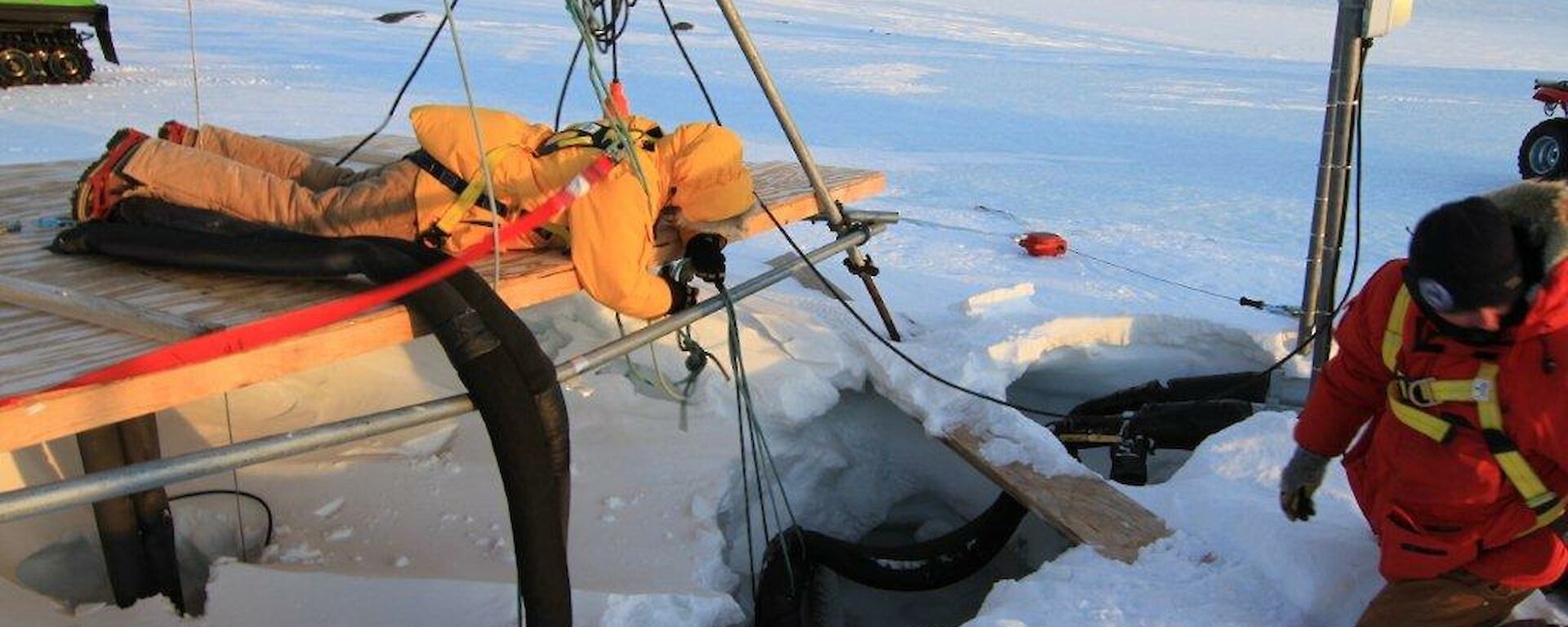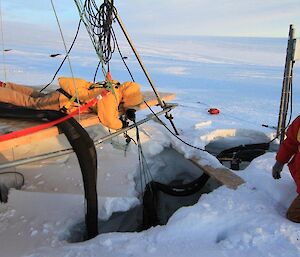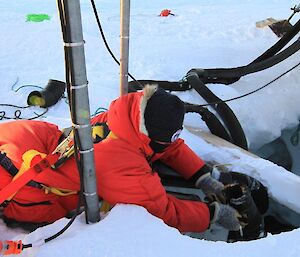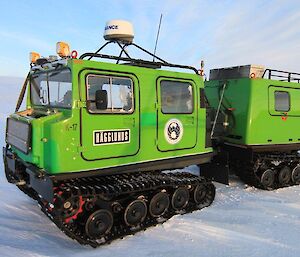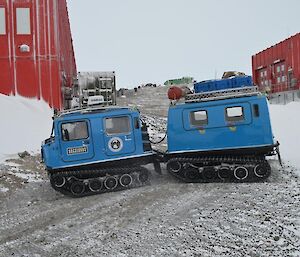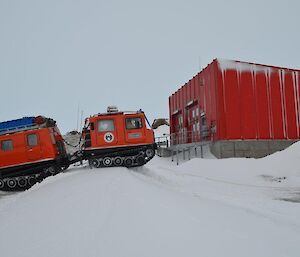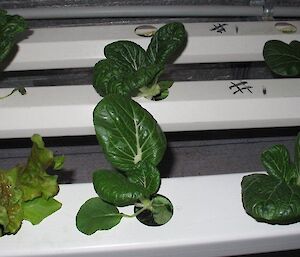With all the hard work and effort that has gone into conserving fuel on station, it was heartbreaking to learn the melt bell had sprung a leak. Not to fear though as the tradies themselves sprung into action, and within a day of identifying the issue it was fixed. Well done guys! This might elevate you to superhero status? Just behind Station Leader Steve!
This week at Mawson: 16 May 2014
The Mawson trades team spring into action
Hägglunds 101
Hägglunds training
A few weeks ago we made the most of a break in the weather and took this as an opportunity for Hägglunds training around station. All drivers need to be capable of using these vehicles in various conditions so a training course was set up by the ‘Diesology’ department at Mawson. Additionally, the vehicles carry GPS and Radar equipment to allow navigation in the worst conditions as well as VHF /HF radios for communication.
The Hägglunds (Bv206 as it is officially known) is a versatile, amphibious tracked vehicle used by the Swedish army. Its versatility enables it to successfully negotiate difficult terrain, including ice and snow. Antarctic operations rely on them more than any other means of transport and they have been used in Antarctica by the Australian Antarctic Division since 1983. They are typically used within medium range (<150km) of Casey, Davis and Mawson stations. Each station also has a dedicated fire Hägglunds.
They even come in different colours.
Mawson hydroponics up and running
The grass is always greener
The concept of being able to grow something green and edible in Antarctica has always intrigued me since starting my journey south. I wasn’t one of the lucky early birds to get their name on the list as hydroponics extraordinaire (I think I had my head in a snow pit analysing snow crystals and being assessed for eight days while hydroponics training happened) so I was a late comer to whole the thing. Nevertheless I tagged along with Dr James (hydroponics extraordinaire) and learned a few things.
Being able to spend time in a warm building with humidity and green growing vegetables and herbs herbs is enough to persuade me to get involved. For me, it’s an opportunity to escape Antarctica for a hour or so and put my hands into, hmm, not soil but a Perlite/Vermiculite combo.
Our hydroponics building is a separate building a mere 20 metres from the red shed (living and dining room building). It’s kinda just like your own veggie garden back home — just out the back door — but you need to dress up to head out into the −20°C temps, to only remove layers as you head into the 17°C greenhouse. What a treat!
Waiting to greet you through the door is about 12 tomato plants around 30cm tall, ten snow pea plants starting to climb up the netting, some dill and parsley in the herb corner, and over in the other section is the lovely green leafy varieties of bok choy, rocket and lettuce. James first planted the first lot of seedlings around four weeks ago and of these, the bok choy and rocket has just had their first harvest, weighing in around 590 grams of produce!
There is a range of seeds that were sent down south, a good variety of herbs, radish, carrots, cucumbers, capsicums, chillies and celery to name a few.
So, with a new found passion on station, I’m planning on heading out to the greenhouse tonight to plant a few seeds of basil, bok choy, parsley and mint — the vision being to create a herb garden!
Heidi Godfrey

